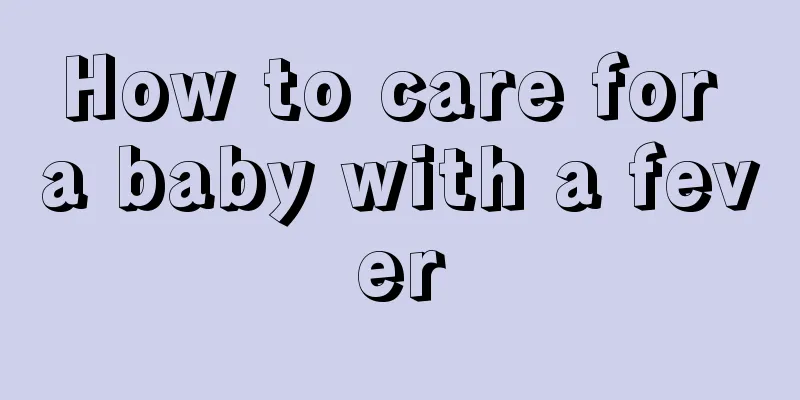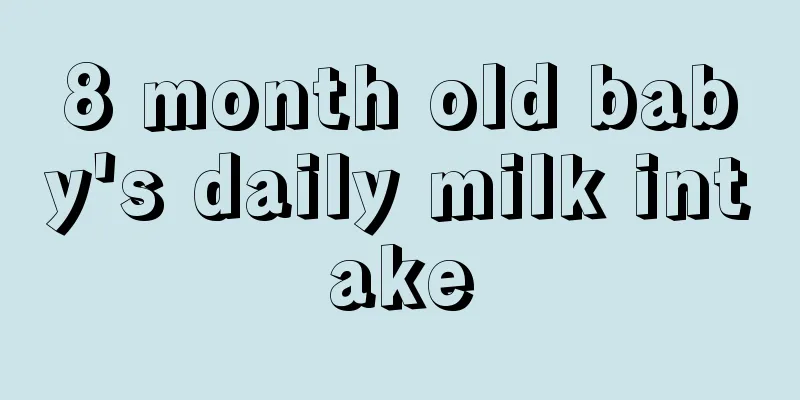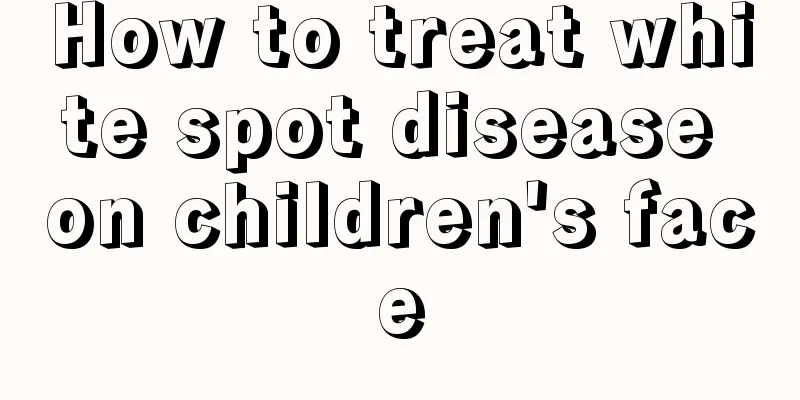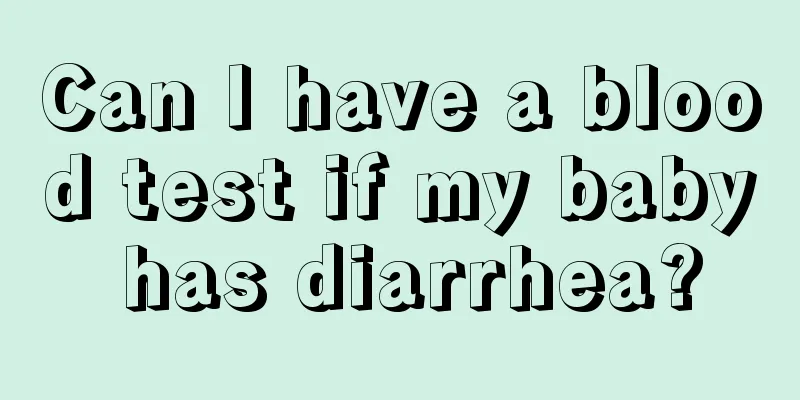How to care for a baby with a fever

|
Because babies grow and develop quickly, their immunity is particularly low, which makes them prone to some diseases. Colds and fevers are the most common symptoms. However, many inexperienced parents don’t know what to do. They often rush to give their babies antipyretics as soon as a fever occurs. In fact, this is very detrimental to the baby’s health. There are many reasons for a baby’s fever. Adjustments and treatments must be made based on the cause of the baby’s fever. In addition, care in life is also crucial. Let’s take a look at how to care for a baby’s fever. How to care for a baby with a fever What kind of children with fever can be cared for at home? "There are individual differences in the normal body temperature of each child, especially newborns and infants, who are easily affected by environmental factors." Xu Runhua told reporters: "First of all, we need to have an understanding of the child's normal body temperature. Generally, the normal body temperature of children is 36℃-37.5℃. If it exceeds 37.5℃, it is a fever. 37.5℃-38℃ is a low fever, 38℃-39℃ is a moderate fever, and above 39℃ is a high fever." Children with low and moderate fever can usually be cared for at home, but even if it is a low fever, if it lasts for more than 3 days, you should go to the hospital in time. If you have a high fever, you should see a doctor immediately and go home for care only after diagnosis. 2. How to cool down your child? "In addition to taking antipyretics, using physical methods to reduce children's temperature is also commonly used." Xu Runhua introduced that cold wet compresses, warm water sponge baths, and alcohol sponge baths can all be tried. "It should be noted that when doing physical cooling, the surrounding environment should also be cooled down." Cold wet compress method: Fold a small towel into several layers, soak it in cold water or ice water, wring it out slightly, and apply it to the forehead. It is best to use two towels alternately, changing them every 3-5 minutes, and applying them for 15-20 minutes continuously. It can also be used on the armpits, neck, and thighs for better results. However, if the child has chills or pink skin, the medication should be stopped. Warm water bath method: Soak a towel in warm water slightly higher than body temperature, and wipe the child's skin all over the body to dilate blood vessels and increase blood flow to dissipate heat. After wiping once, wait for the moisture on the skin to evaporate before wiping a second time until the body temperature drops significantly. Alcohol rub bath method: Alcohol is easy to evaporate and can quickly take away the heat from the skin, achieving the purpose of cooling down. You can apply a cold compress to your forehead before a sponge bath, which can not only help cool down, but also prevent congestion caused by blood concentration in the head due to the contraction of blood vessels on the surface of the body during a sponge bath. Soak gauze or handkerchief in alcohol, wipe both sides of the neck to the arms, then from the armpits to the palms, and then wipe the back from the neck down. Then rub the lower limbs, from the hip through the outside of the leg to the instep, from the inside of the thigh to the sole of the foot, and from the back of the thigh through the knee to the heel. Rub the upper and lower limbs and back for 3-5 minutes each. Focus on the large blood vessels such as the armpits, elbows, groin and behind the knees to improve the heat dissipation effect. Areas such as the chest, abdomen, and back of the neck are sensitive to cold stimulation and should not be wiped. 3. What should you pay attention to when taking antipyretic drugs? Antipyretics can only reduce fever, they cannot eliminate the cause of fever. It is best to do physical cooling first, and if the body temperature does not drop, then use medication to lower it. First of all, if the child's fever exceeds 38.5℃, feels obviously uncomfortable, or has a history of febrile convulsions, antipyretics should be used promptly. Secondly, infants under 3 months old and infants with poor physical constitution should use it with caution to prevent collapse after excessive sweating. Again, the doctor should decide the dosage for each dose based on the child's age and weight, and the interval between doses should generally be no less than 4 hours. Finally, give your child plenty of water after taking the medicine so that he or she can sweat and dissipate the heat, otherwise the antipyretic medicine will not be able to fully exert its effect. 4. What are the dietary requirements when you have a fever? When a child has a fever, he or she consumes more nutrients and water, but because his or her digestive function is also reduced, he or she should reduce his or her diet appropriately and eat nutritious and easily digestible liquid or semi-liquid food, such as milk, soy milk, rice paste, noodle soup, wontons, eggs, etc. Try to give your child more water, such as sugar water, fruit juice, boiled water or cool drinks. Drinking more water is not only beneficial for cooling down, but also for the excretion of bacteria and viruses. In addition, bacteria in the mouth are easy to multiply when the fever is high, so pay attention to oral hygiene. You can rinse your mouth with warm water before meals and rinse your mouth with salt water or brush your teeth after meals. 5. How to observe changes in your child’s condition? It is best to measure body temperature every 4 hours; if the fever is high, measure it every 1-2 hours; measure body temperature 40 minutes after taking antipyretics to observe the effectiveness of the medicine. Observe the mental state, complexion, breathing, and whether there is a rash. If the child has diarrhea, a stool sample can be collected for testing; if the child shows symptoms of collapse such as profuse sweating, pale complexion, weakness, etc., sugar water should be given in time and the doctor should be contacted. If your child is upset, you can divert his attention by telling him stories. Try not to let your child play during a fever to reduce physical energy consumption. The above is an introduction to the care methods for babies with fever. Parents must pay special attention when the baby shows symptoms of fever. First, monitor the baby's body temperature. If the degree is not very high, physical cooling can be chosen. In addition, ensure that the baby's indoor environment is well ventilated and do not dress the baby in too many clothes. If necessary, if the fever is high, go to the hospital for treatment in time. |
<<: Why does a four-month-old baby cry before going to bed?
>>: Diet therapy for indigestion in children
Recommend
What to do if your 50-day-old baby has a stuffy nose
Babies who are about 50 days old are already one ...
What to do if baby's hair is thin and yellow
Nowadays, babies’ health is not as good as before...
Children swallow plastic
Children's bowls are more focused, and they u...
How often do newborns urinate?
Urinating is a phenomenon that the human body nee...
Early signs of anorexia in teenagers
Anorexia is a psychological disorder in which a p...
Children cough when they run hot
If our baby coughs when exercising, it may be cau...
Symptoms of medulloblastoma in children, be alert after reading this!
After the baby is born, a detailed physical exami...
How to make bubble water to blow a lot of bubbles
Bubble water is one of many people's favorite...
The child has a fever and pain around the belly button
Children's bodies are very fragile, so they a...
What should I do if my child’s throat becomes festering?
Children's immune system is relatively weak. ...
Nursing Guidelines for Children with Intestinal Obstruction
The physical health of children is an issue that ...
How to treat chronic rhinitis in children?
When rhinitis and chronic pharyngitis occur in ou...
What should I do if my child sprains his ankle?
Children usually like to do sports very much, and...
What are the symptoms of overfeeding in babies?
The process of feeding a baby is very difficult a...
What are the symptoms of high blood sugar in children
Children's bodies are the healthiest, so all ...









